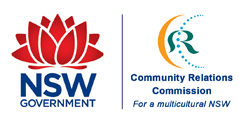The Other Side Of The World:
International Migration To The Tweed 1940s to 1960s
With hopes high and families left behind, migrants travelled to the Tweed from the South Sea Islands, China, India, England, Greece and Italy, and many other nations. This illustrated book documents the Tweed’s history of migrant labour on banana plantations and sugar cane fields.
The Other Side Of The World: International Migration To The Tweed 1940s to 1960s was written by Dr Johanna Kijas and the volunteers of the Tweed River Regional Museum.
It can be purchased through the Tweed River Regional Museum or you can borrow Fait from the Powerhouse Museum’s library and collect it at your local library anywhere in Australia – telephone the Librarian on 02 9217 0259 from 9.00am to 5.00 pm on weekdays.
» Book order form (pdf) » Book launch pictures
In the last 35 years the Tweed Shire, on NSW’s north coast, has undergone major population changes which have completely transformed the landscape and culture of the Shire.
‘Alternative’ settlers arrived in the early 1970s, setting up cooperatives and revitalising small villages. More recently, the coastal areas of the Tweed Shire have become part of the ‘seachange’ movement, a significant demographic change, which is transforming the environment and economy of the Shire.
These recent changes are overlaid on earlier migration patterns that include South Sea islanders, Chinese market gardeners, Italian prisoners of war, some of whom returned to settle in the Tweed Valley, post-war European migrants and Sikh communities.
 John Petersen, Manager, NSW Migration Heritage Centre and Sally Watterson, Former Senior Museum Curator, Tweed River Regional Museum with a friendly banana at the Murwillumbah Museum. |


